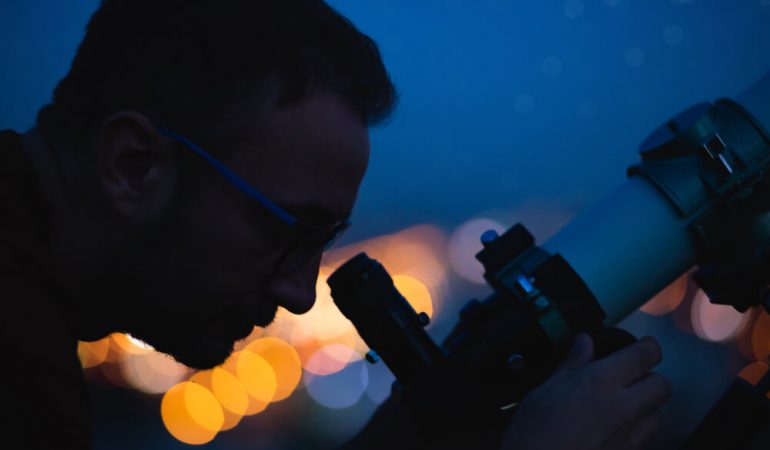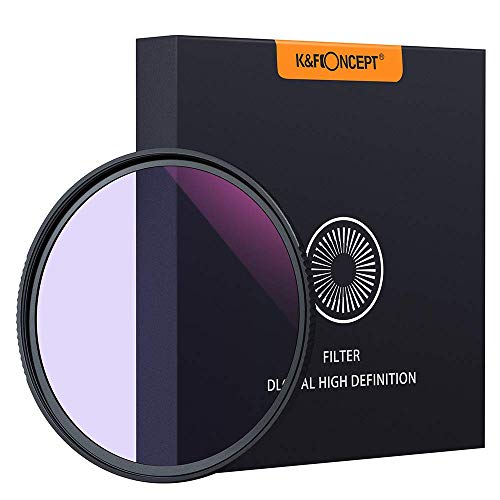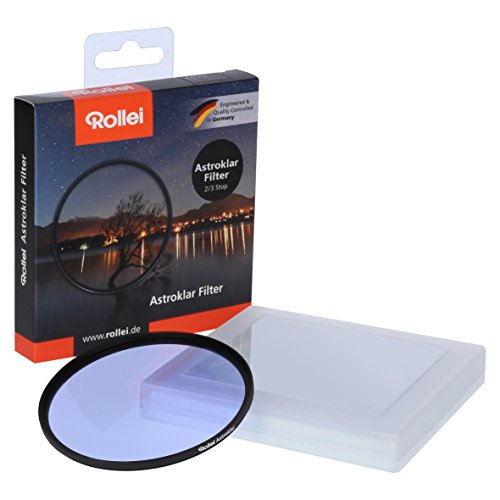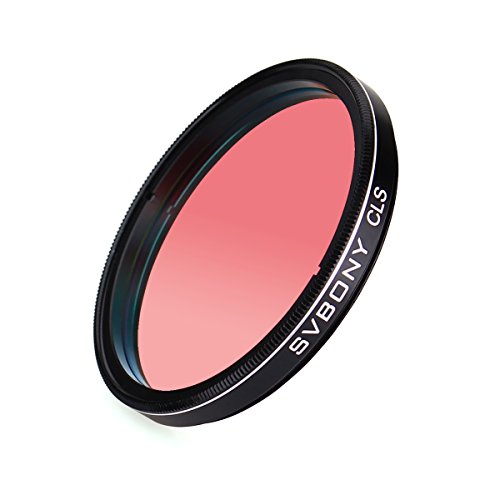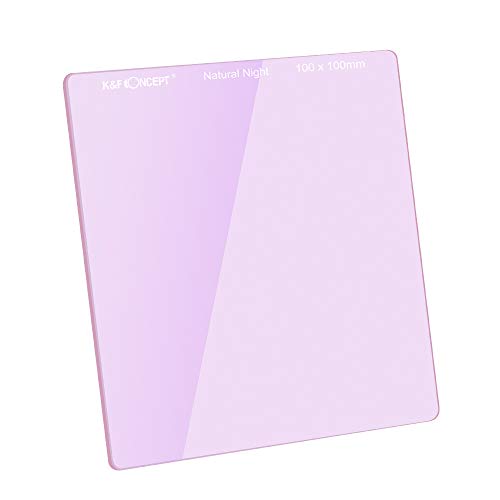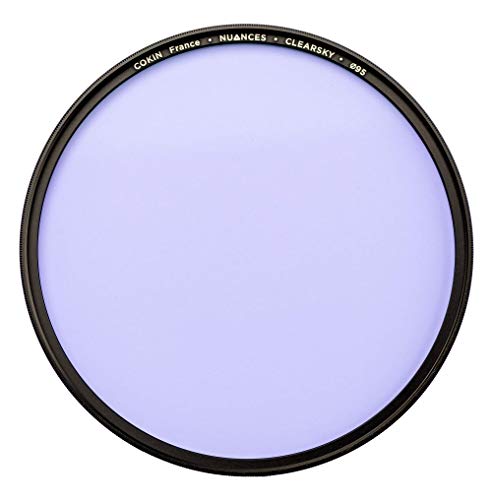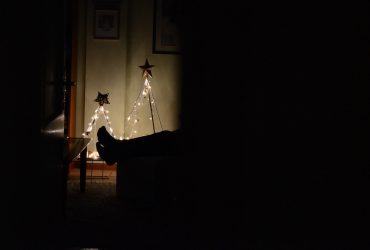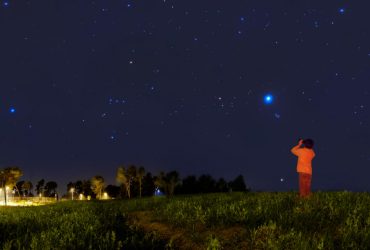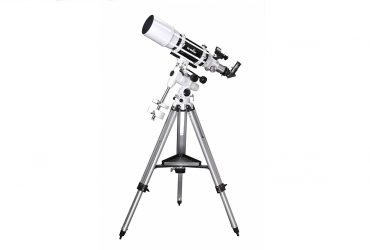How To Choose The Best Light Pollution Filter For Astrophotography
Light pollution filters block light from streetlights and other artificial sources, making it easier to take better quality and richly detailed images of nebulae and stars in the night sky.
Modernisation has brought with it a major headache for astronomers and astronomy enthusiasts: worsening light pollution especially in urban areas.
Light from sodium vapour, mercury and LED street lights is making it harder to observe the night skies. There’s also more intrusion of light from homes, office buildings and cars.
If you’ve used a telescope, you know that light pollution is no small problem. Entire nebulae can disappear from the sky if there’s too much ambient light from manmade sources.
Astrophotography also becomes a challenge. As manmade light sources illuminate dust particles and water vapour in the atmosphere, objects in the sky appear dimmer and have less contrast from their background, making it harder to photograph them.
Some objects may be impossible to see unless you travel to a rural area with little to no light pollution.
If you want to take great celestial photos without having to seek out less polluted skies, you’ll need a light pollution filter.
A light pollution filter is especially helpful for long exposure photography. Without it, your camera would collect the bright glow from the city, overpowering any bright objects in the sky.
How A Light Pollution Filter Works
Streetlights – the biggest emitters of light pollution – produce light at specific wavelengths. For example, high-pressure sodium lamps produce light at 405nm, 436nm, 546nm, and 578nm.
Manufacturers design filters that block out specific light pollution wavelengths while allowing light from celestial objects through.
If you are observing through a telescope, the difference between a light pollution filter and no filter is stack.
A light pollution filter slightly dims the sky but shows nebulae in brilliant contrast to their background. You can pick out finer details that were previously drowned out by light from street lamps.
If you are taking photos, you’ll notice that images taken with a light pollution filter on look more authentic. Details become clearer and previously hard to see objects are easy to pick out in the image.
Different types of light pollution filters are designed to block various wavelengths. It’s important to pick the right one for your needs.
Despite their many benefits, light pollution filters also have their limitations.
The main one is that they are not very effective on the moon and planets.
They work best for photographing the Milky Way and other galaxies, star clusters, emission nebulae and planetary nebulae. Many light pollution filters are also marketed for urban night photography.
Tip: Because light pollution filters effectively ‘cool’ down images by blocking light, it is essential that you use manual white balance to get an authentic colour profile. Adjust the colour temperature to between 700K and 1500K of the original non-filtered temperature.
What To Consider When Choosing A Light Pollution Filter For Astrophotography
a) Type of Filter
Here are the main types of light pollution filters for astrophotography. They are categorised based on which wavelengths they allow through and how much light pollution they block.
1. Broadband filters
These filters have a wide bandwidth (50-70nm), meaning they allow a wide range of wavelengths through while blocking light from sodium and mercury street lamps.
These include wavelengths from H-Beta (green light) and H-Alpha (red light) as well as green light from doubly ionized oxygen atoms or O III (specifically 496nm and 501nm).
One advantage of broadband filters is that they pass light from nebulae as well as stars. So, if you want to photograph a starry night sky, a broadband filter is the best option.
While the ability to pass a wide range of wavelengths is great, it also means that light pollution in these wavelengths is going to pass through as well.
For best results, use a broadband filter in an area with lower than average light pollution.
2. Narrowband filters
If you are photographing in a place with moderate to severe light pollution, look for a narrowband light pollution filter.
Narrowband filters have a smaller bandwidth (typically 20-30nm), meaning they let though fewer wavelengths and block more light pollution.
They allow light from H-Beta (486nm) and O III (496nm and 501nm) but usually not H-Alpha.
Narrowband filters are great for photographing nebulae but they do a poor job of imaging stars. Any stars in the image will appear dim and with a blue-green hue.
Note: There’s a third type of light pollution filters called line filters. They reject more light pollution than both broadband and narrowband filters. However, line filters are mostly useful for direct observations with a telescope, not for astrophotography.
b) Size Compatibility
Make sure you pick the right size of filter for your camera. Manufacturers will usually list what camera types and sizes their filters can fit.
Note: If you are planning to attach your camera to a telescope, make sure the filter you get is also compatible with the size of your telescope lens – usually 1.25” or 2”.
c) Double-Sided Threading
All screw-on filters have threading on at least one side where you attach it to the camera lens.
Some filters also have threading on the other side, meant for attaching additional accessories such as another filter or a T-ring for attaching the camera to a telescope.
A double threaded light pollution filter is more versatile. Even if you don’t think you need one now, it may come in handy later.
d) Waterproof, Oil Resistant and Scratch Resistant
When judging a filter’s build quality and durability, focus on these three things: waterproof, oil-resistant and scratch resistant.
The waterproof bit is especially important since you’ll be working outside photographing stars and nebulae.
e) Round vs. Rectangular Filters
This one is not that important when it comes to light-blocking performance, hence the reason I mention it last.
The main difference between round and rectangular filters is how you fit them on your camera.
With a round filter, you simply screw it onto your camera lens. It’s easy to attach and remove. But it needs to perfectly match the size of the camera lens. If you need to use multiple lenses for astrophotography, you’ll need a filter for each, unless you get a step-down adapter.
A rectangular filter is more versatile when it comes to sizing. You can adjust it (the filter holder, to be specific) to fit your camera lens.
Another advantage of rectangular filter is that it’s easier to stack several of them.
The downside of getting a rectangular filter is that you’ll need to buy a holder for it since it cannot screw onto the camera lens.
Best Light Pollution Filters For Astrophotography
1. K&F Concept 52mm Light Pollution Filter
The K&F Concept light pollution filter uses a nano coating on both sides to block unwanted light. Specifically, it blocks the warm wavelengths produced by urban street lighting.
This allows you to take long exposure photos without interference from light pollution.
It works great for photographing the night sky as well as urban and architectural night photography.
To get the best out of the filter, we recommend using it in a location with mild to moderate light pollution. If there’s too much light pollution, the filter will not effectively block it.
This is a 52mm filter designed specifically for 52mm for DSLRs with 52mm lenses. Check the size of your camera lens to make sure it matches.
67mm, 72mm and 82mm filters are also available.
The filter is held within a thin 3.8mm aluminium alloy frame. The manufacturer kept it thin to avoid vignetting (darkening at the edges of the image), especially when using a wide-angle lens.
The filter is double-threaded, so you can attach additional accessories to the camera with the filter on. This is handy for those who want to stack filters or attach the camera to a telescope.
What I like about it:
- Great for photographing nebulae and stars.
- No vignetting.
- Waterproof, scratch-resistant and oil-resistant coating on both sides.
- Double-threaded.
- Affordable
2. Rollei Astroklar Light Pollution Round Filter
The Rollei Astroklar filter is a bit pricey but has better light-blocking performance. If you live in an area with moderate to high light pollution, it is the best choice.
It produces high-contrast images of nebular, star clusters and galaxies like the Milky Way by blocking out common yellow and orange light wavelengths from streetlights and other artificial sources.
To ensure nothing mars your photos, the filter is coated on boat side with a nano-coating that repels water, oils and dirt. If you notice a smudge on the glass, a quick wipe with a clean cloth is enough to get it clean again.
The Rollei Astroklar filter is available in a wide range of sizes from as small as 39mm up to 150mm. Check your camera lens size and look for a corresponding size on the product’s Amazon page.
You can also select a rectangular filter.
What I like about it:
- Excellent light-blocking performance.
- Water, dirt and oil resistant.
- Wide range of sizes available.
3. Svbony CLS Light Pollution Filter
The Svbony CLS (city light suppression) filter works great in low to moderate light pollution environments.
It allows passage of light at H-beta (486nm), O III(496nm and 500nm), NII(654nm and 658nm), SII(672nm) and H-alpha(656nm) while blocking most major sources of artificial light.
To ensure durability, the filter has a special coating that protects it from accidental scratches. It also comes with a plastic storage/travel case lined with sponge.
The filter is two sizes: 2” (50.8mm) and 1.25” (31.7mm). It’ll fit on any CCD or DSL camera of a corresponding size.
The only thing we don’t like about the Svbony CLS light pollution filter is the lack of double threading. It’s threaded on one side only, meaning you cannot attach any other accessory to it.
The single sided threading is also a big downside for those planning to attach their camera to a telescope.
What I like about it:
- Affordable.
- Blocks most sources of city light pollution.
- Ultra-thin design eliminates vignetting.
- Protective carrying/storage case.
4. K&F Concept 100 * 100mm Square Natural Night Filter
If you prefer a rectangular or square light pollution filter, we recommend this one from K&F Concept.
It uses the same materials and light-filtering technology as the K&F Concept round filter we’ve review above.
The main difference between the two is that this square one can fit more lens sizes. The manufacturer recommends it for use with 52mm, 55mm, 58mm, 62mm, 67mm, 72mm, 77mm and 82mm lenses.
You just need to adjust the holder for the size of lens you are using.
Talking of a holder, the main downside of getting the K&F Concept square filter is that you’ll need to buy a filter holder separately.
The 100mm by 100mm filter blocks out yellow and orange light wavelengths from streetlights and other city light sources.
Each side of the 2mm filter has a nano coating that reduces glare, light reflection. The coating also provides protection from water, scratches, oil and dust.
You’ll also appreciate the stylish protective leather pouch that comes with the filter. It’s handy for storing the filter whether you are at home or travelling.
What I like about it:
- Excellent performance in polluted environments.
- Fits a wide range of lens sizes, unlike a typical round filter (eliminates the need to have a separate filter for each lens).
- Durable nano coating.
- Leather carrying/storage case.
5. Cokin Clearsky Light Pollution Filter
The Cokin Clearsky Light Pollution Filter uses neodymium, an element that improves image contrast and boosts light wavelengths from nebulae.
Neodymium also enhances the red part of the light spectrum, which makes for easier imaging of mars and Jupiter.
The Cokin Clearsky filter also blocks yellow and orange lights from artificial sources, mostly mercury and sodium vapour street lights.
Similar to other light pollution filters, the Cokin filter ‘cools’ down your images. To retain an authentic colour profile, switch camera settings to manual white balance and increase colour temperature to between 700K and 1,500K of the unfiltered settings.
As for size, the Cokin Clearsky filter is compatible with 95mm camera lenses.
What I like about it:
- Effective light pollution blocking.
- Neodymium element improves image resolution and contrast.
- Double-sided anti-reflective, anti-scratch and water-repellent coating.
